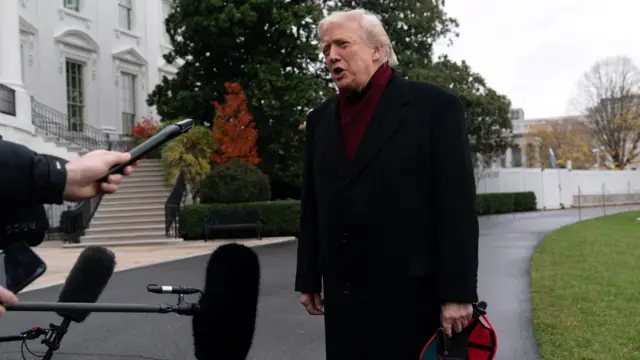The 28-point peace plan for Ukraine – a brief historypublished at 08:26 GMT
08:26 GMT
 Image source, AP
Image source, AP
Last week, details of a 28-point plan to end the war in Ukraine emerged.
The White House says the plan – discussed by the US and Ukraine in Geneva over the weekend – has been endorsed by President Donald Trump after being drawn up by his officials.
US Secretary of State Marco Rubio also insists the framework was “authored by the US”, though accepts it had been “based on input from the Russian side”.
That’s after a group of US senators said Rubio told them that the plan was not an American proposal – that it represented the Russian position and was leaked by Moscow.
European leaders expressed unease at the 28-point plan, saying it was too favourable to Russia, and stressed it would “require additional work”.
The BBC has not yet seen the document in full – but here’s a rundown on five things we know were in the initial plan:
A deadline: Trump initially gave Ukraine until Thursday 27 November (Thanksgiving) to accept the 28-point plan, but said this could be extended if talks are “going well”
Handover of territory: Zelensky’s troops must withdraw from parts of the Donetsk region they currently control, to create a “buffer zone”. Russian control of the region would be internationally recognised, as well as Moscow’s control over the neighbouring Luhansk region and the southern Crimea peninsula, which was annexed by Russia in 2014
Cut in armed forces: Ukraine is asked to cut its armed forces to 600,000 people – last January it was estimated at about 880,000 active personnel
Ukraine’s future: Kyiv must commit to not joining Nato, though it would still be eligible for EU membership
Bring Russia back from isolation: The country would be “reintegrated” into the global economy
It’s important to remember, though, that the initial plan is being negotiated, and could change significantly.
The US says that “based on the revisions and clarifications presented” in Geneva, the Ukrainians “believe the current draft reflects their national interests and provides credible and enforceable mechanisms to safeguard Ukraine’s security in both the near and long term”. We are yet to see those revisions and clarifications.

